
From the Gold Cup to the Christmas Market, this Regency spa town has reinvented itself
[caption id="CheltenhamTownofFestivals_Feature" align="aligncenter" width="1024"]
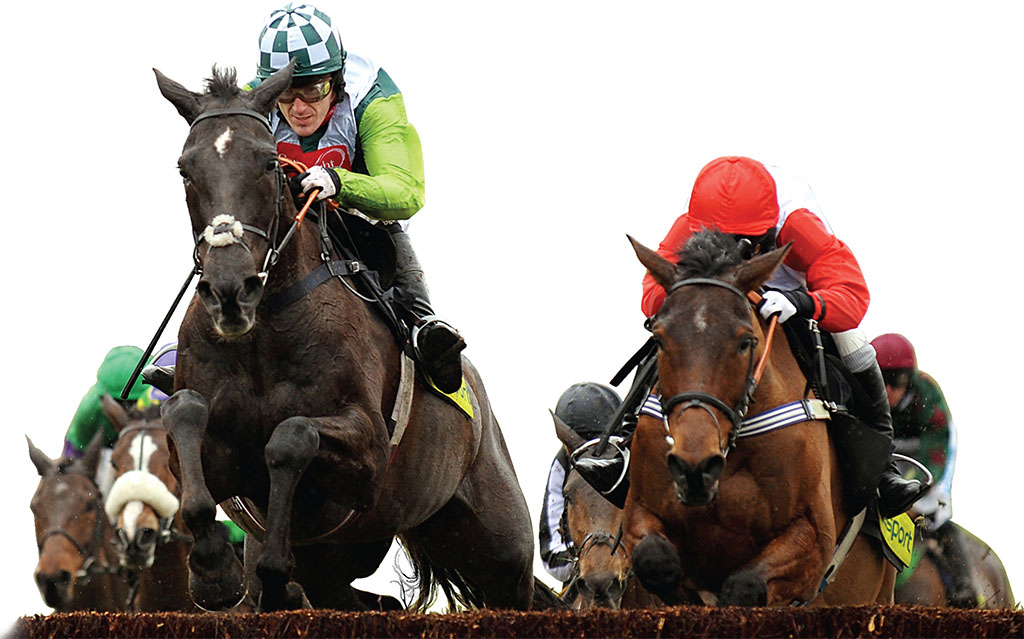
ADRIAN DENNIS/AFP/GETTY IMAGES
[caption id="CheltenhamTownofFestivals_img1" align="aligncenter" width="147"]
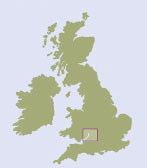
Aband plays on the platform as passengers board the steam train at Toddington station in the Cotswolds. An occasional grand hat and copies of the Racing Post offer a clue to their destination. This train journey only takes 30 minutes, but there is an excited buzz in the air that doesn’t just come from the champagne being served by the volunteer staff.
Steam train is a great way to arrive at the Cheltenham Festival, England’s premier National Hunt horse racing event, held in a natural amphitheatre that holds both town and racecourse.
The Queen Mother always arrived by train for her beloved Cheltenham races. During the 1950s, the Royal train brought glamour to this tiny station, built solely for the racecourse. It closed in the 1960s along with much of England’s rural rail network. In 1981 a group of rail enthusiasts, now the Gloucestershire and Warwickshire Railway, started to rebuild the Cotswolds’ steam history—eventually recreating 10 miles of track and three charming stations. Cheltenham station was reopened by the Queen Mother’s granddaughter, HRH Princess Royal, in 2003, and traveling by steam to the races was back.
Although best known for its stunning 18th-century Regency architecture, Cheltenham’s racing heritage dates back to 1815. The present festival started in 1902. Even the Cheltenham Literature Festival, one of many festivals in Cheltenham’s calendar, celebrated a mere 60 years in 2009 (albeit as the world’s oldest literature festival). Cheltenham truly has a festival for everyone.
Cheltenham’s population of 110,000 more than doubles during the festival, so travel plans are essential. Surrounding fields become parking lots, and private helicopters land regularly. Crowds weave their way through taxis and limousines that are almost at a standstill. To book a room in the town center during Gold Cup Week is practically impossible. Many people book the same room year after year—others travel in from up to 50 miles away. If you do manage to get the jump on reservations, many accommodation choices are within walking distance of the key landmarks. The Cheltenham Apartments are Regency townhouse apartments that overlook Montpellier Gardens and the bands playing in the park. Also in a restored Regency property, yet in a more contemporary style, the Cheltenham Townhouse is midway between Pittville Park and the town center and offers bed and breakfast accommodation.
If anyone can help you, it’s Angie Rowlands, who has helped visitors for more than 37 years. Now head of Tourism for Cheltenham, Angie and her team can help obtain festival tickets and accommodation, even in the busiest months. Managing to get to some of the races herself, Angie has a rollercoaster of a week. “The atmosphere is just amazing…it’s like a high,” she says, “I get so deflated when I think, ‘Oh no, it’s all over for another year.’”
One of the attractions of National Hunt racing (or steeplechase), in contrast to flat racing, is that horses have a longer racing career. “People follow their favorites year after year,” says Andy Clifton, the racecourse’s communication manager. “There’s no question that this is the most popular race meeting in the country. People just love to soak up the atmosphere.”
The mainline station, two hours from London, is known as Cheltenham Spa, not merely Cheltenham. Although nowadays a whole calendar of festivals contributes to the town’s success, the town’s real growth originally came from the spa. The first spring, discovered in 1716, was developed in the 1730s by Henry Skillicorne whose wife inherited the spring and associated land. He built the first of many “pump rooms” at the head of one of the first of many elegant avenues of elm trees.
After King George III’s visit in 1788, Cheltenham’s reputation soared. New springs were discovered and grander buildings designed to house them. By the 19th century, the town’s developers had created England’s first “garden town” with grand classical terraces, formal gardens and wide, tree-lined avenues.
Cheltenham’s reputation for its Regency architecture is due to the preservation of so many of the original buildings. Intricate iron-work and colonnaded entrances are not confined to a historical district. The town’s largest Regency building built in 1823 with an entrance of grand white columns, is the municipal building that houses local government offices.
[caption id="CheltenhamTownofFestivals_img2" align="aligncenter" width="1024"]
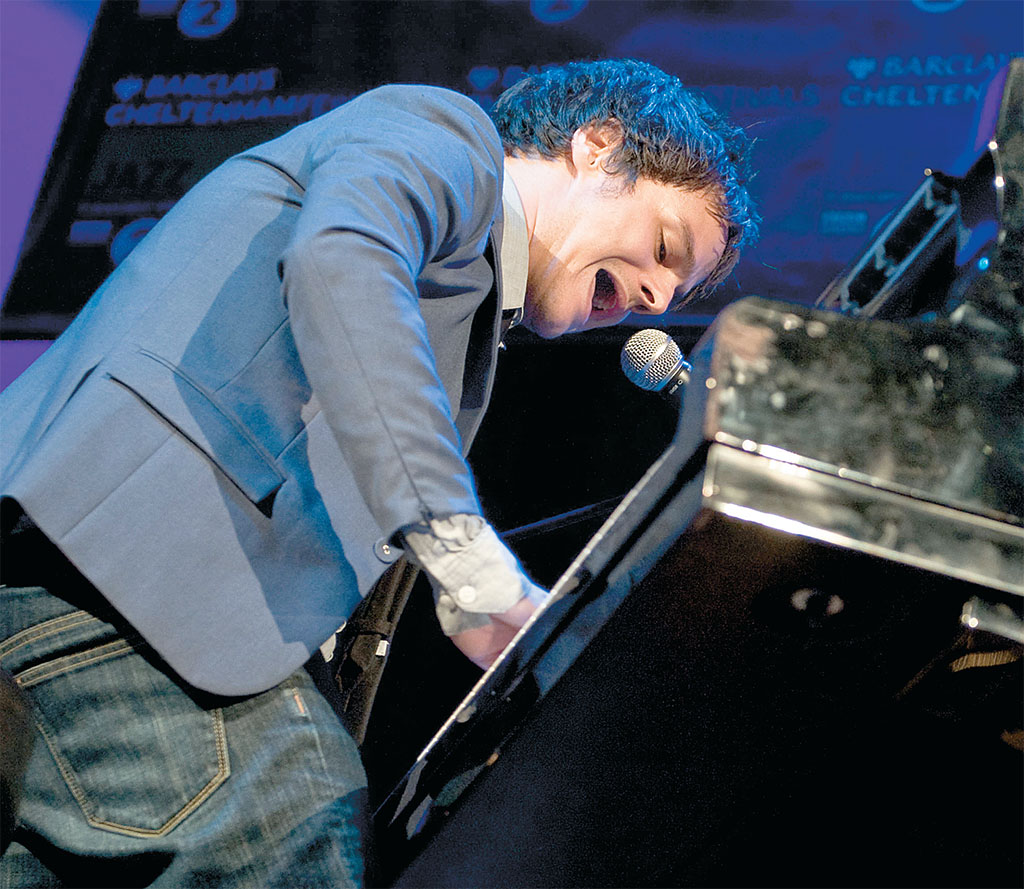
REDFERNS
CHELTENHAM Festival Calendar
February ……………………………………………………….Cheltenham Folk Festival
March 15-18 ………………..Cheltenham Festival or Gold CupWeek (Racing)
April/May ……………………………………………………..Cheltenham Jazz Festival
May………………Cheltenham Festival of Performing Arts (Local competition) Cheltenham Rugby League Festival
June…………………….Wychwood Music Festival (at Cheltenham racecourse) Cheltenham Food and Drink Festival Cheltenham Science Festival
July…………………………………………………………….Cheltenham Music Festival Cheltenham Cricket Festival
August………………….Greenbelt Music Festival (at Cheltenham Racecourse) Cheltenham Ballroom Dancing Festival
October ………………………………………………………..Cheltenham Film Festival Cheltenham Literature Festival
November………………………………………………………The Open Race Meeting
December……………………………………………..Cheltenham Christmas Market
Similarly, an early pump room is now a branch of Lloyds bank —the original domed ceiling still on show. This is in the Montpellier district, characterized by the caryatids based on sculptures from the Acropolis in Athens. The tall white ladies support the cornices of up-market bars and boutiques in this popular area; a place to be part of festival fever away from the racecourse. Montpellier’s Rotunda Terrace is certainly one of the grander places in England to find a betting shop.
The Cheltenham Gold Cup is the most anticipated race of the week; locals refer to the entire festival as “the Gold Cup.” Dedicated fans can be photographed holding the gold trophy at Martin & Co., the jewelers who have commissioned the design for 70 years.
Many such fans are Irish. When the daffodils arrive in Cheltenham, so do the barrels of Guinness. Irish tricolor flags fly from pubs and bars. Whole Irish families come over, or sometimes just the village priest. He has the responsibility, and hopefully a little divine inspiration, for putting the village’s hard-earned money on the right horse.
[caption id="CheltenhamTownofFestivals_img3" align="alignleft" width="489"]
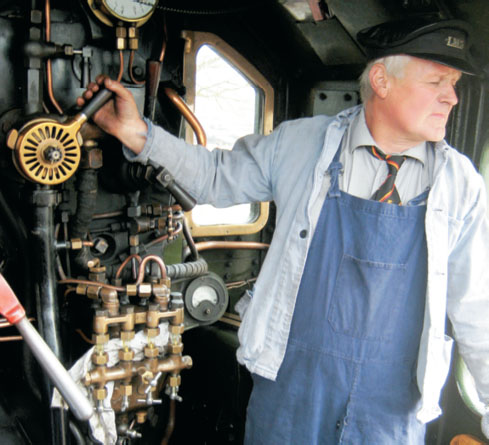
REBECCA GARDNER
[caption id="CheltenhamTownofFestivals_img4" align="aligncenter" width="740"]

O’Neils Bar, in Montpellier, serves a full Irish breakfast, featuring Irish soda bread and colcannon—mashed potatoes with spring onions and cabbage. Across the road, the Montpellier Wine Bar also boosts a lively atmosphere, yet despite such crowded bars, the atmosphere during race week is unfailingly friendly.
The other festivals in Cheltenham’s calendar can seem quieter affairs compared to racing. But what they lack in crowds and champagne, they make up for in a constant stream of entertainment from April to October. From jazz legends to science professors, from politicians to rock guitarists, they all come to Cheltenham.
Jazz has a festival all to itself in May, and the new kid on the block is June’s Science Festival. In June, also, Montpellier Gardens hosts the recently established Food and Drink Festival. The Cheltenham Music Festival in July is one of England’s oldest music festivals, first held in 1945. It offers classical performances and more contemporary fringe events.
These festivals really bring inside and outside spaces to life. Listening to a string quartet under the grand dome of the Pittville Pump Room, for example, is a sheer delight. Cheltenham’s most complete example of Regency architecture, The Pump Room, is in the style of a Greek temple and sits among the open lawns and mature trees of Pittville Park.
Ten minutes walk from Pittville Park to the town center takes in the free street performers, often with audience participation. In the center are the Everyman Theatre and the Edwardian Town Hall. The Town Hall, built in 1903, is in bold contrast to its Georgian neighbors and hosts the larger concerts.
Back at the racecourse, the festivals continue without the horses. In June, families camp out at the Wychwood music festival. In August, a similar Christian music event is very popular. At the end of the summer, the Cheltenham Cricket Festival is held in the grounds of the Cheltenham College and has been since 1872.
For many people, the highlight of the Cheltenham year comes in the last two weeks of October. Cheltenham Literature Festival, established in 1949, hosts hundreds of events, and a small tented village is built aside the Town Hall to accommodate them all. Speakers are as diverse as Bob Geldolf and Judi Dench, along with well-known authors such as Maya Angelou and P.D. James. Events range from intimate discussions to lively debates on chosen themes—from history to the media, from politics to travel. Book ahead for keynote celebrity speeches with audiences of up to 2,000, but also look for smaller, quirkier events. The writing workshops are excellent, hosted by established authors and national newspaper journalists.
[caption id="CheltenhamTownofFestivals_img5" align="alignright" width="800"]
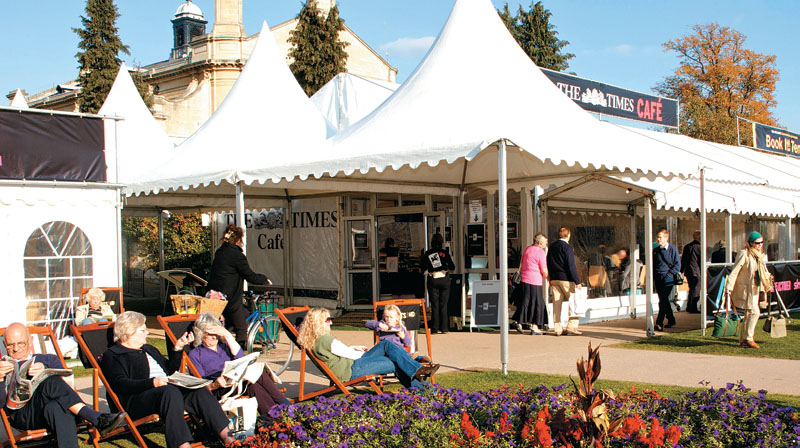
JULES BERESFORD
Cheltenham Bound
The Queen’s Hotel
The Promenade
Cheltenham GL50 1NN
www.mercure.com
The Cheltenham Townhouse
12-14 Pittville Lawn
Cheltenham GL52 2BD
www.cheltenhamtownhouse.com
Cheltenham Apartments
16 Montpellier Spa Road
Cheltenham GL50 1UL
www.cheltenhamapartments.co.uk
O’Neils Irish Bar
23 Montpellier Walk
Cheltenham GL50 1SD
www.oneills.co.uk/oneillscheltenham
Montpellier Wine Bar
Bayshill Lodge
Cheltenham
www.montpellierwinebar.com
Anderson Coffee House
16 Regent Street
Cheltenham GL50 1HE
The Daffodil
18-20 Suffolk Parade
Cheltenham, Gloucestershire GL50 2AE
www.thedaffodil.com
Cheltenham Tourist Information
(info on accommodation, history and all festivals)
www.visitcheltenham.com
Cheltenham Racecourse
www.cheltenham.co.uk
Opposite the literary hustle and bustle is The Queen’s Hotel. Based on the temple of Jupiter in Rome, it was built on the site of a 19th-century spa. As well as many royal guests, the composer Gustav Holst, who was born in the town, stayed here. His statue stands nearby, conducting the autumn leaves. During wartime, the hotel was an American Services Club with entertainment by stars such as Bob Hope and Glenn Miller.
The festival’s official refreshment areas are lively, but often too full to sit down with your signed book. Peer through the iron railings to find an independent coffee shop—often located in store basements. The Anderson CoffeeHouse on Regent Street is a lovely traditional tearoom covering all three floors of its Georgian home; just five minutes walk from the Town Hall.
As the winter draws in, festival fever slows down. The Christmas market complements the many independent stores preparing for the holiday season. The antiques and collectables shops of “the Suffolks” neighborhood sell anything from vintage clothing to chandeliers. Also in the Suffolks is a building very modern by Cheltenham standards. The Daffodil restaurant is set in an original Art Deco cinema built in the 1930s, and is highly recommended as a real visual and culinary treat.
The year ends as it began—with racing. Andy Clifton recommends “The Open,” a race meeting in November, as a great way to experience the atmosphere of jump racing without the Gold Cup crowds. And on one of the last journeys of the year, you can still arrive at Cheltenham by steam.





Comments